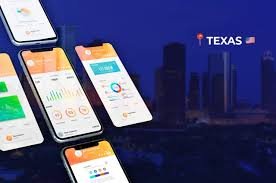
In today’s digital age, businesses need to be smart about how they attract customers. One of the most effective methods to boost both online and offline traffic is Pay-Per-Click (PPC) advertising. But what is PPC exactly? It’s an advertising model where businesses pay a fee each time one of their ads is clicked. While most people associate PPC with driving online sales, it’s also a powerful tool to get people walking into your store!
Understanding Targeted PPC Campaigns
Now, not all PPC campaigns are created equal. Targeted PPC campaigns focus on reaching specific audiences based on demographics, interests, or location. This makes the campaign more efficient since you’re not wasting ad spend on people who aren’t likely to convert. The magic lies in audience segmentation – breaking your target customers into specific groups, so your ads are hyper-relevant to them.
How Targeted PPC Drives Foot Traffic
Here’s where it gets exciting. Targeted PPC campaigns can be designed to drive foot traffic to physical stores, not just clicks on a website. By creating ads that appeal to people in a specific geographical area, you can lure them to your store with offers, discounts, or events. Several case studies show how businesses have successfully used PPC to increase in-store visits by integrating online ads with offline marketing strategies.
Benefits of Targeted PPC for Businesses
Why is targeted PPC a game-changer? For starters, it’s cost-effective. Instead of spending money on broad, unfocused campaigns, targeted PPC ensures you’re only reaching people who are likely to visit your store. Plus, it provides instant visibility, meaning your ads show up to your target audience immediately, often translating into faster results compared to other marketing tactics.
The Role of Localized PPC Campaigns
For brick-and-mortar stores, localized PPC campaigns are the sweet spot. Geographical targeting allows you to show ads to users within a specific radius of your business. Whether you run a coffee shop or a boutique, PPC can help you get noticed by locals. Localized campaigns are especially beneficial for businesses that rely heavily on foot traffic.
Steps to Create an Effective Targeted PPC Campaign
Creating a successful targeted PPC campaign involves a few key steps:
- Audience Research: Know who your customers are. Understand their demographics, interests, and behaviors.
- Platform Selection: Decide whether you want to run ads on Google, Facebook, or another platform.
- Ad Scheduling: Time your ads to appear when your audience is most likely to see them.
By being strategic in your setup, you ensure your campaign is both effective and cost-efficient.
Ad Copy and Messaging for Targeted PPC
Your ad copy is the first impression your audience gets, so make it count! The goal is to create ads that are irresistible. Use clear, concise language that speaks to the needs and desires of your audience. And don’t forget the importance of landing pages. If your ad promises something, the landing page should deliver – whether that’s more information or a clear call to action.
Measuring the Success of Targeted PPC Campaigns
How do you know if your PPC campaign is working? Keep an eye on key performance indicators (KPIs) like click-through rates (CTR), cost-per-click (CPC), and conversion rates. For businesses aiming to drive foot traffic, tracking store visits from PPC ads is crucial. Tools like Google Ads and Google Analytics offer insights into how your ads are performing.
Optimizing PPC Campaigns for Better Results
Once your campaign is up and running, optimization should be a continuous process. Test different versions of your ads (A/B testing) to see which performs better, and use analytics to adjust your targeting and budget. Small tweaks can lead to significant improvements in campaign performance.
Challenges in Targeted PPC Campaigns
While targeted PPC is highly effective, it’s not without challenges. One common issue is over-targeting – when your audience is too narrow, limiting your reach. Additionally, competition for keywords can drive up costs. But with proper strategy and adjustment, these hurdles can be overcome.
Targeted PPC vs. General PPC
What’s the difference between targeted PPC and general PPC? While both aim to attract customers, targeted PPC is more precise. General PPC casts a wide net, while targeted PPC focuses on a specific group, making it more efficient and often more effective in driving store visits.
Leveraging PPC Services for Your Business
Businesses that aren’t familiar with the ins and outs of PPC often turn to professional PPC services. These services help create, manage, and optimize campaigns to ensure you’re getting the best return on your investment. When choosing a PPC service provider, look for one with experience in your industry and a track record of success.
Integrating PPC with Other Marketing Strategies
PPC works best when combined with other marketing strategies like SEO, social media marketing, and email campaigns. A multi-channel approach ensures you’re reaching customers at different touchpoints, increasing your chances of success. Think of it as casting a wider net to catch more fish!
Real-World Examples of Increased Store Visits through PPC
Businesses across industries have seen real results from targeted PPC. Whether it’s a local restaurant that saw a 20% increase in foot traffic or a retail store that doubled its in-store purchases, the proof is in the numbers. These success stories highlight the potential of PPC when done right.
Conclusion
In conclusion, targeted PPC is a powerful tool for businesses looking to increase store visits. With the right strategy, you can turn online clicks into foot traffic, making it an essential part of any marketing plan. Whether you’re a small local business or a larger retail chain, targeted PPC can help you achieve your goals.



